Over the past half a century, there have been quite literally hundreds of supercars produced around the world. Each and every one is a paragon of some sort, either of performance, luxury, technology, outright speed and acceleration—or on very rare few occasions, all of those combined.
It is those rare occasions that we are celebrating with this list.
It would be helpful to first of all what we mean by a “milestone supercar.” As automotive engineering and design has advanced through the years, supercars became the flagship vehicles for a lot of new technology or for being the ultimate models of that specific era or generation of cars, so much so that they are looked at through the lens of “before and after.”
These are the cars that so perfectly define what a supercar is, or introduced new technologies and systems that we take for granted today. They planted their names in history and will never be forgotten.
It is only fitting, then, that the very first car on this list is the one that started the whole crazy segment of the automotive industry…
The First Supercar: The 1967 Lamborghini Miura P400

If there is one thing that we, as both a civilization and a species love, it’s an origin story. For supercars, that origin story began with three engineers working for Ferruccio Lamborghini—Gian Paolo Dallara, Paolo Stanzani, and Bob Wallace, who got together after work hours to create the ultimate road-going sports car.
Part of their design was the revolutionary thought that had emerged in motorsports just a few years prior, of placing the engine of the car in the middle of the car, not up front. After attracting a lot of attention from just a rolling chassis in 1965 to demonstrate the idea, to having one of the most beautiful shapes in the history of cars penned by Marcello Gandini from the Bertone design house in 1966, in 1967, the Lamborghini Miura was released.
At the time of its release, it was beyond anything that had been made before. It was the fastest production car by a huge margin with a top speed of 176 MPH. It was one of the most expensive cars of the day at $20,000 (about $164,000 in 2022), and was produced in very limited numbers, with a total of 768 ever being made across its three sub-models. It served no other purpose than to be driven and seen, as it had very little luggage space and barely even had a glove box. In other words, it ticked all the right boxes, and in part created the boxes that would in future need to be ticked to make an automobile qualify as a supercar: exotic, very fast, with no other purpose than to be driven and enjoyed.
There were some superb and very rapid GT, or Gran Turismo (Grand Touring), cars before the Miura, but when it landed in 1967, it had the same effect as the meteor that ended the dinosaurs. It was an Earth-changing event, a fixed point in time, the moment the entirety of the supercar niche was born. Nothing would be the same after it.
The Poster Car: The 1974 Lamborghini Countach LP400

Lamborghini took another first when, in the middle of the counterculture movement of the 1970s, after one oil crisis and heading into another one, they dropped the Lamborghini Countach into the middle of everything.
Prior to the Countach, you could put a Ferrari 250 GTO and a Lamborghini Miura side by side and ask anyone off the street which one was the supercar, and you’d probably end up with a 60/40 vote in favor of the Miura.
However, put a 250 GTO next to a Countach and ask those same people which one was the supercar, and we’re willing to bet that 99.9% of people didn’t even see the Ferrari. That is what defines the Countach. It took the idea of the supercar and elevated it to include extravagant styling, futuristic lines, and eventually even a gigantic wing that served no aerodynamic purpose—but damn if it didn’t look cool as hell.
From the mid-1970s to the late 1980s, if you looked at the dorm walls of quite literally any freshman college student, you would find a poster of the Countach hung, taped, tacked, or otherwise present on said walls. It wasn’t because the car was actually any good, as it had windows that didn’t open, an air conditioning system that was akin to an asthmatic mouse coughing at you from 50 feet away, and had a gearbox that needed a sledgehammer to make it move to the next cogs. It was because for the generation that grew up during that time, it simply was the poster car.
The Tech & Development Powerhouse: The 1986 Porsche 959

Porsche is quite proud of being a sports car manufacturer, never really dipping their toes into the supercar market except when they have something so completely revolutionary that it has to be considered a milestone car. This is despite many of their sports cars easily qualifying when it comes to the top speed and exotic designs necessary for supercars—but because most Porsches are usable as daily drivers, they do not meet the requirement of having no other purpose than to be driven.
However, the Porsche 959 is one of those exceptions. Originally designed to race in the barely-any-rules Group B class of the FIA World Rally Championship, it was absolutely packed to the brim with the latest and greatest motorsports advancements.
These features included auto-adjusting electronic suspension, a sequential twin-turbocharged 2.8L 24-valve flat-six producing 444 HP that used a smaller turbo to help spin up a bigger turbo for smoother power delivery, Porsche’s own AWD system known as Porsche-Steuer Kupplung (PSK), and an electronically controlled transfer case for said system. Of those systems, the most valuable was the PSK AWD system, as it gave birth to the Carrera 4 model trim for the 993-and-beyond versions of the Porsche 911.

The car also featured magnesium-alloy wheels that were hollow for weight saving, and one of the first tire-pressure monitoring systems was integrated into those wheels. The body was made of an aramid-composite for lightness and durability, and the chassis was one of the first to use motorsports-grade aluminum for a road car.
Keep in mind, this was during a time when all-wheel-drive was something you found on heavy-duty military vehicles and some very extreme rally cars, and steel was the most common material used to build cars.
After years of development setbacks and working out all the bugs in all the new tech, when the first 959s started to be delivered to customers they were instantly the fastest supercars ever made, with most being able to reach 197 MPH, and the extremely rare 959S version being able to reach 211 MPH.
Due to the fact that the car was also, to that point, the most expensive new production supercar ever made, at a cost of $225,000 per unit ($600,000 in 2022), only 292 of the standard Sport and Komfort versions were built, and only 29 959S units were completed.
The Ultimate In Italian Performance: The 1987 Ferrari F40

It might surprise you, but the Ferrari F40 came very close to not being made. Much of the development work that eventually led to the now legendary car was done for what was going to be Ferrari’s entry into Group B rally racing, the 288 GTO Evoluzione, in a project started in 1984. It was a race car through and through, with a 650 HP twin-turbo 2.9L V8 in a strong aluminum chassis with a carbon fiber body over it, and was ridiculously fast, capable of 225 MPH.
By the time the car was ready after two years of development, and after five road-going homologation specials of twenty needed had been built, the FIA suddenly canceled Group B due to a series of fatal accidents.
This left Enzo Ferrari, ailing and aging in 1986, with a two-year project that had led to cars that couldn’t be raced and were of no use being sold. It was his Chief Engineer of the 288 GTO Evoluzione, Nicola Materazzi, that convinced “The Old Man” that the development work already done could be transferred over into a road-only car.
Enzo approved the project, and soon afterward the original designs of the F40, to celebrate the 40th anniversary of the Ferrari company, were drafted, based heavily on the 288 GTO Evoluzione.
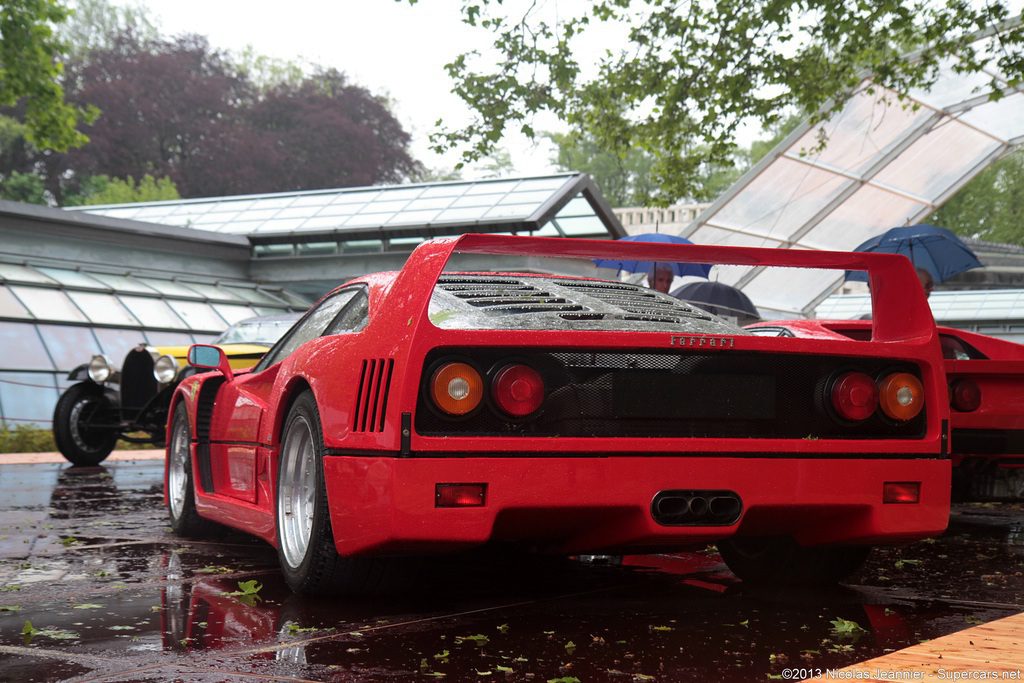
As it was a celebration of a company that had formed to support its race team, the Ferrari F40 was about as close as you could get in the 1980s to a race car built for the road. There were no concessions to comfort, although there was an air conditioning system, which was only put in because it would help cool the engine. There were no carpets, no door handles, the paint was so thinly applied that you could see the weave of the carbon fiber through it, and most of the windows save the windscreen were lexan plastic. The engine was “mildly” detuned from the GTO Evoluzione, from 650 HP to 477 HP, and aerodynamics played an important part in cooling the engine.
Other cars in the 1980s were faster, such as the Porsche 959, but when the F40 premiered in July of 1987, it was the single fastest car at 201 MPH (claimed), and the fastest accelerating car (with a 0 to 60 of just over 4 seconds) to ever have come out of Italy.
Reactions were mixed, with praise being lauded upon it for its styling and absolutely razor sharp handling on a track, but it was stiff, didn’t have any sound deadening, and as it had no carpets or upholstery, you could see all the bond lines that glued the carbon fiber pieces together. It eventually caught on, however, and in total, between 1987 to 1992, 1,315 left the factory. They are considered prized collector cars today.
The Original Japanese Supercar: The 1991 Honda NSX

Since 1966, pretty much every supercar of note came from within Europe. Many of these supercars were known to be temperamental, with service intervals as short as 3,000 miles, and many an engine and transmission would need a rebuild or repair after being pushed too hard, too long.
In other words, supercars were seen as toys for the wealthy, and reliability was near the bottom of the list of considerations. That was, until Honda came out of absolutely nowhere in 1990 with their supercar.
Developed as part of a program that was officially codified in 1985 as “New Sportscar eXperimental,” or NSX for short, the stated goal of Honda was to keep up with their Japanese and European competitors. Part of the development process, especially to match the performance figures of competitors, involved the development of an all-new engine, the C30A 3.0L V6. This was the first Honda V6 engine to use a new system known as Variable valve Timing and Emission Control, or VTEC. The engine, after refinement and tuning, produced 270 HP.
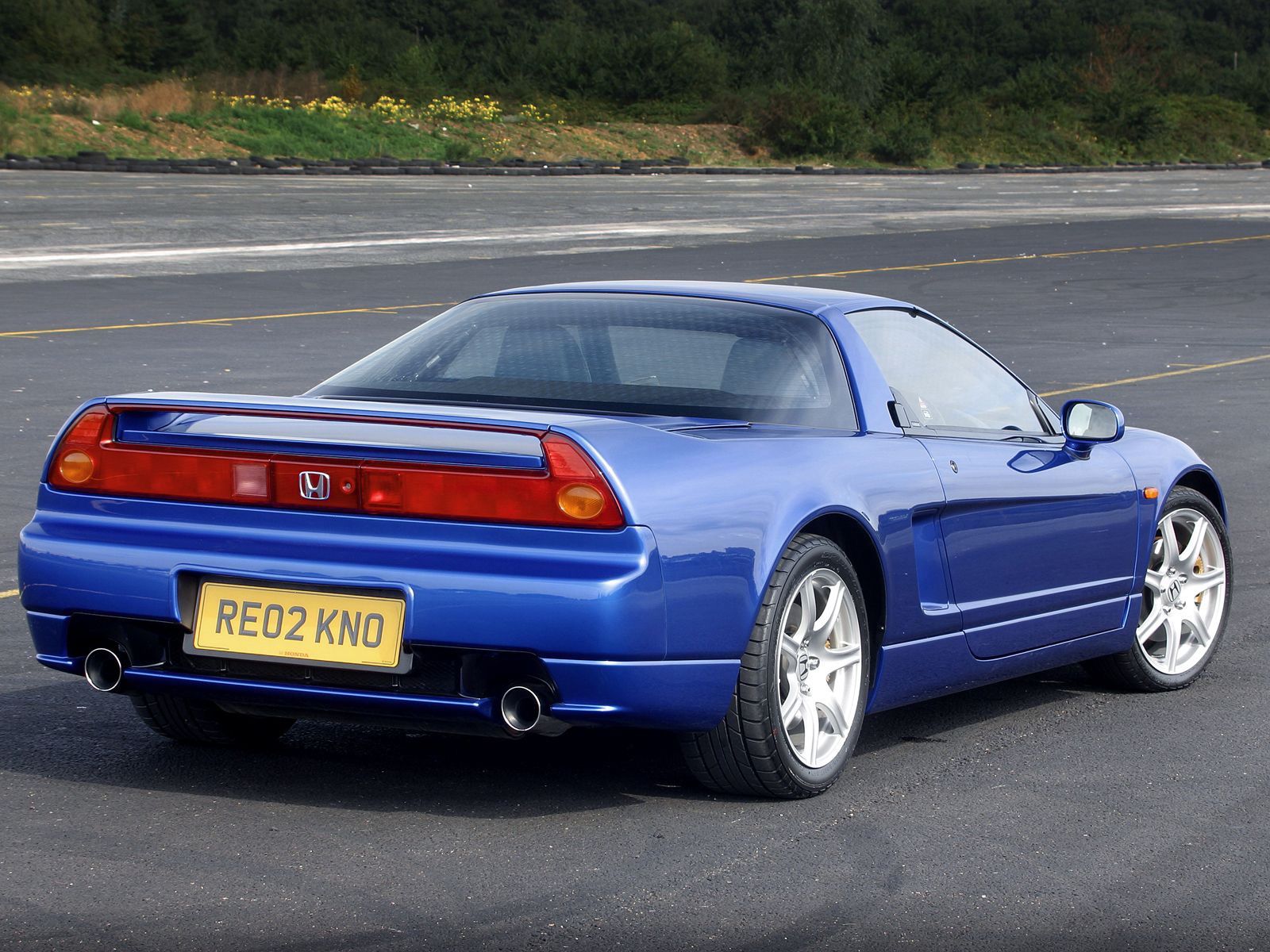
This may not sound like much, but the NSX was built from aluminum and, for the first cars released at least, had a wet weight of 3,010 lbs (1,370 kg), making it as light as a Ferrari F40. Inspired by the look of an F-16 fighter jet, it had a cab-forward design with superb visibility, and placed the engine as close to the middle of the chassis as possible. The secret weapon of the NSX, however, was that its suspension and handling characteristics were sorted out by none other than the legendary F1 driver Ayrton Senna.
As Honda was partnered with McLaren for much of the late 1980s and early 1990s, Senna was able to drive the prototype car once in 1988 after the Japanese Grand Prix, noting that the chassis and suspension needed to be stiffened. He then came back in 1989 to spend an entire day with Honda engineers, going into minute detail of how to “dial in” the suspension and handling.
This meant that when the NSX finally went on sale in 1990 as a 1991 model year supercar, it had nearly telepathic handling characteristics, something noted in every magazine and TV review of the day. With enough power to make it fast, but not so much as to make it uncivilized, it had a superb ride, amazing handling, was the halo car for the VTEC system—and as a testament to the level of reliability that the NSX set the bar at, since its introduction in 1990 to the end of the first generation’s production in 2005, not a single VTEC system failed from mechanical or manufacturing error.
The First No-Compromises Hypercar: 1992 McLaren F1

Very few cars in the history of supercars have changed the entire landscape of the segment as the McLaren F1 did in 1992. The only other car that even comes close is the Lamborghini Miura, which started the segment. The McLaren F1 was the pet project of Gordon Murray, who had helped design and engineer some of the most dominant McLaren race cars for Formula One in the 1980s, including the legendary MP-4/4. He had a vision of a car that would be the ultimate road car, with the best driving position (in the middle), the most powerful engine, the most aerodynamic body, and the fastest top speed.
As Murray was part of the McLaren F1 team that flew out to races in the 1980s, and before the 1988 Japanese Grand Prix, their engine partner Honda invited Murray and Ayrton Senna to give their thoughts on their brand new prototype, the NSX. Murray drove the car, and knew instantly in his mind that the NSX became the car he had to beat, not in speed, but in ride quality and handling. He even tried to get Honda to build the engine for his new supercar, a 4.5L V10 or V12 rated at 550 HP but weighing no more than 250 kg (551 lbs), and having a block length no more than 600mm (23.6 inches), but he couldn’t convince them.
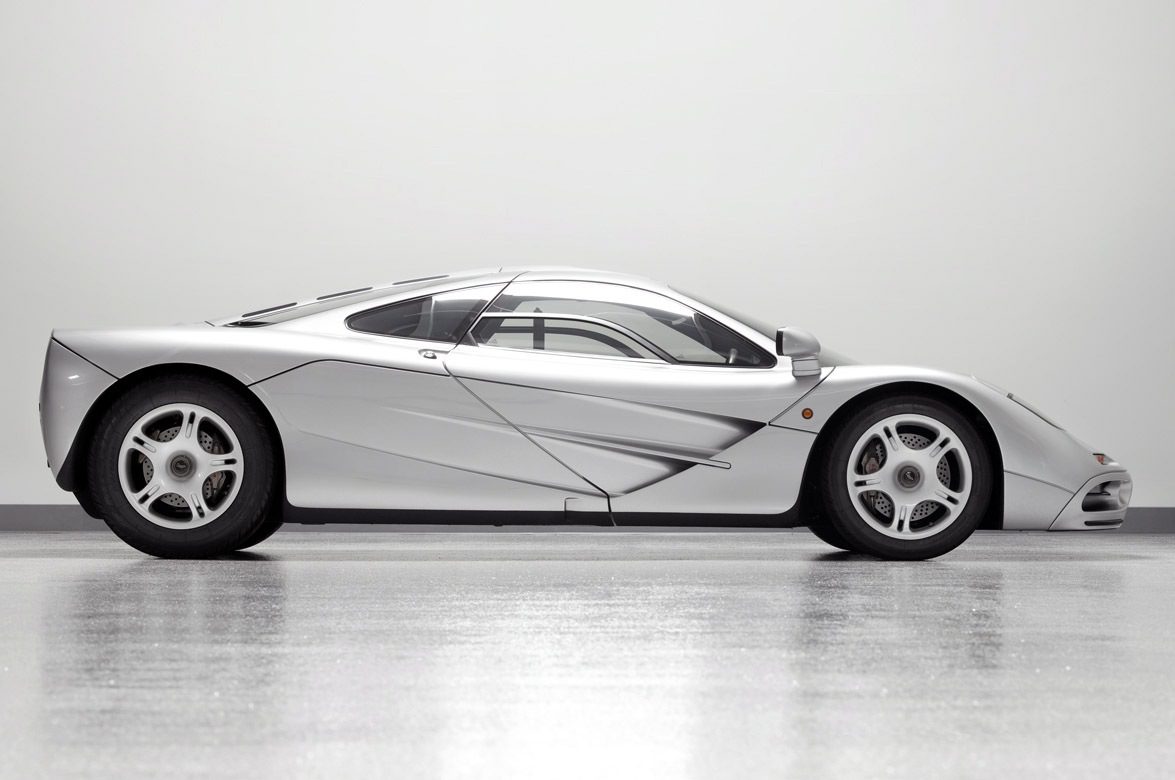
BMW took a keen interest when asked, and the result that emerged from the BMW M Division was one of the best V12 engines ever—the S70/2 6.1L V12. This monster of an engine produced 618 HP and weighed 266 kg (586 lbs), which was 14% more powerful and 16 kg (35 lbs) heavier than Murray’s original specifications, but crucially was exactly 600mm in block length. It was also built out of exotic materials with titanium, aluminum, even magnesium used throughout.
To make up for the compromise of the engine being slightly overweight, Murray went through every drawing and design and found areas he could add lightness. The toolkit that came with the car, for example, was made out of titanium. In this dogged pursuit of lightness, the McLaren F1 was also the very first road car to be made almost entirely out of carbon fiber reinforced polymer (CFRP), including the main monocoque and all of the body. The only metal bits in the car were the suspension, the engine bay, the engine cradle, and the rear strut bar.
The engine produced a lot of heat, and the final hurdle that Murray had to clear was that CFRP did not do well in terms of rigidity and stability when exposed to extreme heat. To combat this, the entirety of the engine bay was lined with gold foil, the best heat reflection material at the lightest weight available.
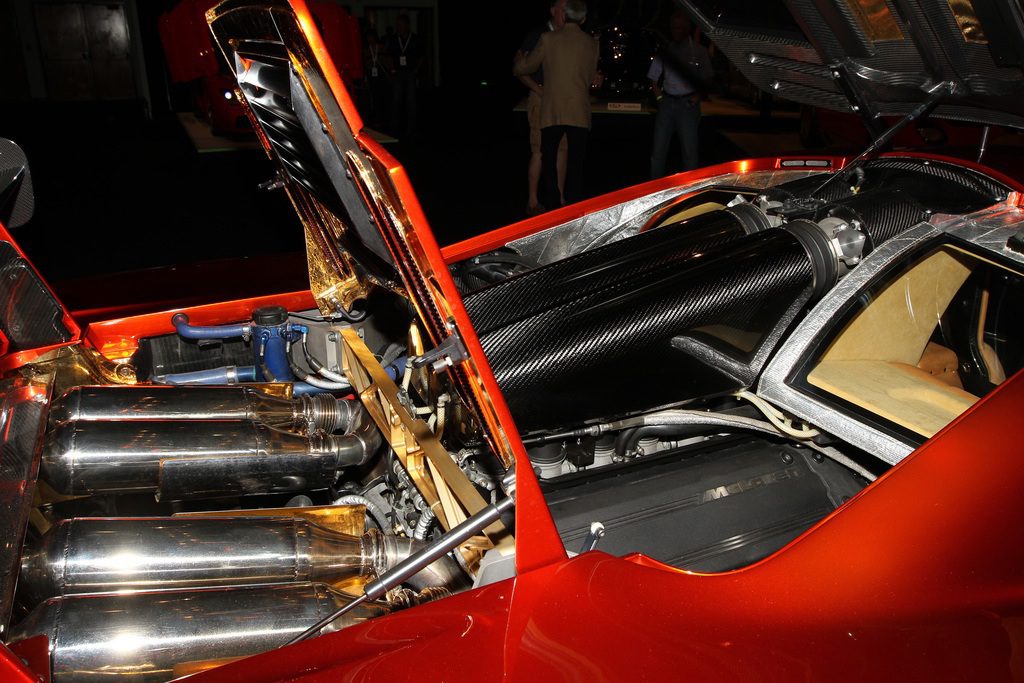
Unveiled in 1991, the car went on sale as a 1992 model year car and immediately set numerous records. It was the first road car to have an MSRP of $1 million USD, which is $2,146,000 today. It was the fastest car to be produced in the 20th century, with a top speed proven in 1998, at VW’s Ehra-Lessien test track with its famous 5.4 mile long straight, using the five year old XP5 final prototype car, at a two-way average speed of 240.1 MPH.
The New Definition of a Supercar As Art: 1999 Pagani Zonda C12

In 1988, Horacio Pagani resigned from Lamborghini as manager of their composite materials department, and founded Pagani Composite Research. Because of his former ties to Lamborghini, Pagani’s company was a key research and design partner for many of the cars from Sant’Agata Bolognese in the 1990s, including the P140 concept car and the Diablo. However, now that he didn’t have to answer to the higher ups at Lamborghini, himself suddenly being the highest up, he started to design his own car.
Being possessed of a singular talent for combining aesthetics with functionality, the first design drawings of the new Project C8 car were of a low, long wedge with a surging, almost cresting-of-a-wave-style cockpit up front, with a big V12 engine behind it powering the rear wheels, which were under subtle fender flares. It was, in a word, art.
So devoted was Pagani to the new car that he spun off the research and engineering departments of Pagani into a new subsidiary, Modena Design, and renamed his company to Pagani Automobili.
That art made it to reality in 1993, when the first C8 prototype was completed, and it looked like an artistic interpretation of a land-based fighter jet. It also proved to be quite aerodynamic, as testing in the Dallara wind tunnel proved.
Pagani knew that he had to make every part of his car artistic and beautiful, including the noise it made, so he visited Germany in 1995. When he left, Mercedes-AMG, so impressed by the combination of art and engineering in the pictures and drawings brought along, and by Pagani’s passion for the project, agreed to provide V12 engines.

Project C8 was renamed to the Zonda C12, and in 1998, after some revisions in design and testing with the monstrous Mercedes-AMG M120 6.0L V12 with 444HP, the car was revealed to the world at the Geneva Motor Show. At $2.3 million, it was a showstopper not just for its price, but for the fact that it defied convention, with a design and interior that looked like they had been lifted out of science fiction and made real.
It was considered at the time, and still is today, as one of the most beautiful cars ever made. From every angle, it was aggressive yet artistic, with brutalist steampunk-inspired air conditioning vents in the cabin, which itself looked like a modernized version of a 1920s lounge.

It was never going to be the fastest car, but Horacio Pagani put his faith in customers who wanted his cars not just for their performance (as with so many other Italian supercars), but for the excellence in carbon fiber and composites, the artistic design, and the appreciation of the car as rolling art that could also reach nearly 200 MPH.
Only five C12 units were built before Mercedes-AMG provided a Pagani-only version of the M120 that had fettled to 7 liters producing 542 HP, which became the pulsing heart of the Pagani Zonda C12-S. In total, 140 Zondas were produced over its 20 year lifespan, including the development mules, and each and every one of them is considered to be one of the most beautiful supercars made in the 21st century.
The Car that Saved Lamborghini & Supercars As a Whole: The 2003 Lamborghini Gallardo

Lamborghini, in the late 1990s, was on the brink of bankruptcy. The Lamborghini Diablo was not moving enough units to save the company, and it got so close that the lawyers had begun to draw up the first drafts of the bankruptcy filing when Audi swooped in and bought out the company. Design and engineering began immediately on a successor to the Diablo, the Lamborghini Murcielago, which was released in 2001, although it did not make a significant dent in the market, as it was priced at nearly $300,000—tens of thousands more expensive than most V12 supercars on sale at the time.
Audi noticed this early on, and as such had not pinned their full hope on the Murcielago. They instead focused on what Audi was famous for, which was very powerful engines in sedan or coupe sized bodies, with comfort, luxury, and performance, prioritized in that order. This was embodied in the first non-V12 Lamborghini released since the 1980s: the Lamborghini Gallardo Coupe.
It carried an Audi 5.0L V10 putting out 493 HP, driving either all four wheels or just the rear two. In a marked departure from many Lamborghinis of old, the Gallardo had a plush, leather filled cabin, with soft touch surfaces, hand-stitching everywhere, and was, despite being a little small, a genuinely nice place to be. The air conditioning actually worked, the leg room was superb, and there was even dual zone climate control.

Crucially, however, the Gallardo was just over half the price of a Murcielago before options, at $166,000. Compare that to the price of a brand new 2003 Ferrari F360 at $140,000, which “only” had a V8, rear wheel drive, and produced 395 HP.
The Gallardo was also much more affordable for Lamborghini to produce, compared to models before the Audi ownership. The production line had been streamlined, and as part of the VW group, the supply chain was stable, so a lot of cars could be made relatively quickly. Lamborghini was making money again, and was looming ominously over the “affordable” supercar segment.
So how does this translate to saving supercars as a whole? The Gallardo, more than any other model, forced other supercar makers to re-examine their lineups, as supercars had been trailing off in sales for about five years by 2003. The result was that other manufacturers pushed their prices down, their quality way up, and invested into engines and performance to provide equivalent HP and handling to the mighty Audi TFSI 5.0L V10 and the AWD system the Gallardo used.
By 2005, supercars were less expensive, but their sales volume, for the first time in nearly a decade, went up. All because the Germans helped certain Italians make an affordable, competition-beating supercar that brought the raging bull back into the game.
The First with a Racing Engine on the Road: 2004 Porsche Carrera GT

In the late 1990s, Porsche was racing at Le Mans with their 911 GT1 and LMP1-98 cars, both of which carried extremely powerful flat-six engines. After the 1998 FIA GT and Endurance season, the GT1 class was killed off, and a new design of LMP1, the LMP1-900, was implemented.
Porsche had started to design a LMP1-900 car, which was originally intended to use a 4.0L turbo flat-six, but was not reaching power expectations by the start of 1999, so the vault was opened and a V10 engine that had been built by Porsche and the Footwork F1 team in 1992 was pulled out.
At the time, that engine had proved to be an abject failure, but with the engineering expertise gained in the subsequent years of racing in Le Mans and developing new engine technologies for road cars, it was reworked, re-engineered, and the LMP1-900 car was redesigned to fit the larger 5.5L V10. The car got as far as completing two days of testing, with power much closer to expectations and some promising results, before it was canceled so that all of Porsche’s greatest minds could focus on their first-ever SUV, the Porsche Cayenne.
However, a skeleton crew was assigned to design a concept car to show off the engine and Porsche’s design style, as well as draw attention to their stand at the Paris Motor Show, and the Carrera GT Concept was built, with the original 5.5L V10 mounted longitudinally behind the targa cockpit. The concept was a smash hit, much to the shock of Porsche, and customers were contacting their dealerships to ask when the road going version of the concept was going to come out.

Surprised by the interest, and with their coffers filling up with the runaway success of the Cayenne SUV, the Porsche Carrera GT was moved from a concept to an approved production car, to be the flagship of their new production facility in Leipzig. The 5.5L V10 remained largely unchanged, with the only modifications being made to the fueling system that would see it able to handle lower octane (91 or greater) fuel instead of needing 105 to 110 octane race fuel, and a subsequent boring out of the cylinders to allow for proper combustion of that fuel, resulting in a 5.7L V10.
The newly road-ready racing engine produced 603 HP and 435 lbs-ft of torque, in a car that weighed 1,380 kg (3,024 lbs) soaking wet with two cinder blocks in the passenger seat. It was extremely tail happy if you did not respect the clutch or the immense, immediate power from the engine, and proved to be quite a handful for many owners.
However, after adjusting to the needs of the car, those same owners had on their hands one of the best-sounding, pure and raw supercars ever put to market, and many now consider them treasured centerpieces of their collections.
The First True Hypercar: The 2005 Bugatti Veyron 16/4

The story of the Bugatti Veyron is an interesting and involved one, and you can read it in full detail here. To make a long story short, Bugatti was bought by the VW Group in 1998, and to succeed the EB110 supercar, a project was immediately started to engineer, design, and build the fastest, most luxurious road car ever made. This order came from VW Group chairman Ferdinand Piech, famous for his nearly impossible engineering targets.
The engineering challenge was immense, and from 2001 to 2004, the team worked tirelessly to meet all the goals set to them. An 8.0L W16 engine layout was settled upon as the best layout, with four banks of four cylinders each. This was so that each of the four turbochargers attached to the engine could provide forced induction to a single bank, reducing the size of the turbochargers needed, meaning they would spin up faster. To maximize the power extracted from the charged air, the bore and stroke was perfectly square at 86 by 86 mm (3.39 by 3.39 inches).
With the quad turborchargers, the engineers were able to push power to 987 HP (1,001 PS). The thing was that during testing of the engine to get to that power, the engine would rapidly overheat. An entirely new concept of cooling was needed, and as such, the Veyron 16/4, as it had been named, carries a total of 10 radiators: 3 for heat exchangers attached to the air-to-water intercoolers, 3 for the engine coolant itself, 1 for the air conditioning system, 1 for the transmission oil, 1 for differential oil, and 1 for engine oil.
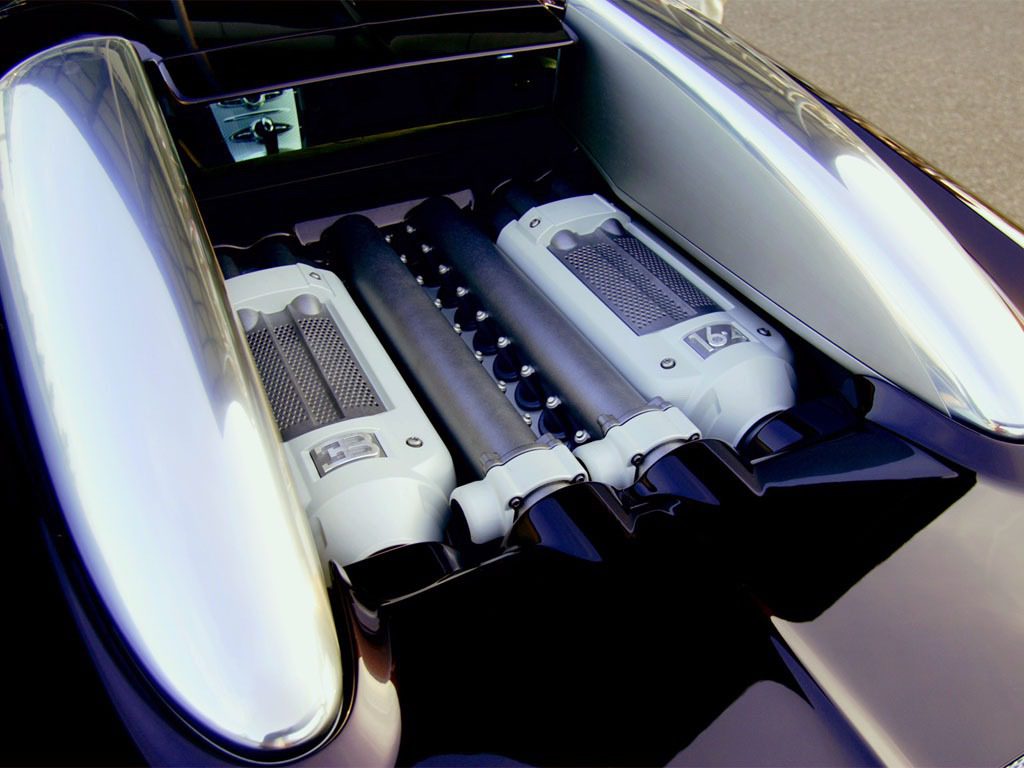
It is universally acknowledged as the first car to meet the modern definition of a hypercar: having over 1,000 HP, being capable of unbelievable speeds, and having an MSRP over $1 million. The Veyron also held the outright production car top speed record at 253.2 MPH, and until later variants of the Veyron and the new Bugatti Chiron emerged, it also held the strange-but-cool record of consuming 45,000 liters of air per minute at that speed—or about as much air as you, the person reading this, will breathe over the next 85 or so hours. The Bugatti Veyron Super Sport, the fastest variation of the Veyron, broke both records, recording 267.9 MPH and consuming over 47,000 liters of air at that speed.
As a bit of a comedic note, the Veyron does have an engine governor built in, but 99.9% of owners will never encounter it. That is because the governor kicks in at 258 MPH to prevent the tires from disintegrating as the result of centrifugal force and abrasion against the road surface. Also, over the entire production of the Veyron, VW lost money for each one sold. Production costs started at about $5 million per car, and by the time the last model rolled off the line in 2014, it was up to $7 million. However, that is a small price to pay to have your name etched into history forever as the first universally acknowledged hypercar.
The Ultimate Engineer’s Car: The 2010 Lexus LFA

The Lexus LFA has the unfortunate moniker of “the billion dollar failure,” as Toyota, when developing the car over the course of nearly a decade, spent just over $1 billion to bring it to the road. However, what came from that project was one of the greatest cars to earn the title of supercar, and set the standard by which the engineering of all supercars after 2010 would be judged against.
This was because through the course of its development, an absolute masterpiece of a V10 engine was created, advanced aerodynamic and composite concepts were brought to a production road car (including an entire restart of chassis and body material development), and the car itself served as the launch point for an entirely new design language for both Toyota and Lexus.
The reasons that the car is the ultimate engineer’s car are three-fold. The first is the V10 engine, as it was a long-term project in cooperation with Yamaha, who were originally contracted due to their expertise in high-revving bike engines. The V10 for the LFA had to be smaller than a typical V8, rev as high as possible, be as light as possible, and produce power equivalent to a V12.
The result was the 4.8L 1LR-GUE Dual VVT-i V10, which was made almost entirely of aluminum including forged aluminum pistons, forged titanium connecting rods, and solid titanium valves. It redlines at 9,000 RPM, has a fuel-cutoff at 9,500 RPM, and can go from idle to redline in quite literally half a second. This necessitated the creation of one of the first TFT dash displays, as an analog tachometer simply couldn’t keep up with how fast the revs of the engine rose and fell.

The second reason the LFA is the ultimate engineer’s car has to do with the engine, but involves the induction and exhaust systems. Since Yamaha also produces musical instruments that are known for their clarity of tone, some of those engineers were brought in to “tune” the engine. This was not so much in terms of performance, but to shape the dual intakes to create the perfect amount of interference with each other in the airbox to create a raw, powerful induction note. They were also tasked with shaping and designing the exhaust so that the engine note would reverberate and gain volume as it bounced off the walls, exiting the inverted triangle triple exhaust with a banshee howl that remains one of the best exhaust notes, ever, to this day. You can hear it in this video.
The third reason the LFA is the ultimate engineer’s car is the way the body is shaped and made. Almost entirely a single monocoque of resin-impregnated carbon fiber, the only metal bits of the car are the engine cradle, front crumple zones, and suspension attachment points, with all of those being aluminum as well.
The front of the car does not hold any radiators, instead being dominated by the dual air intakes behind a precisely calculated “gap” between the front bumper and the hood. This compresses the air at speeds high enough to create the raw induction note, and speeds up the air so it flows better up the intake tubes.

The radiators are actually mounted above the rear bumper, behind two large grilles under the tail-lights. The body, even the wing mirrors, are shaped to flow air tightly along the sides of the car and feed into two intakes, one down near the side skirts, and one in the C-pillar. Both of these intakes feed through the radiators, exhausting out the grilles under the tail-lights, with the lower intake also diverting some air for rear brake cooling.
Put together, and selling at $345,000 each, each car lost untold millions of dollars compared to development and production costs, and that’s why it is considered a billion dollar failure. But by paying attention to all the details, and engineering the car to be as perfect as it could be, the LFA successfully demonstrated just what Toyota and Lexus could do when they gave it their all—and in the bigger picture, that probably earned them untold billions more than it cost to make the car.
The New Definition of Refinement: 2014 McLaren 650S

It’s a bit surprising, considering the popularity of their cars, but McLaren Automotive has only existed for 12 years as of 2022. Started in 2010, the first car they produced, the MP4-12C, was designed to be as smooth through the air as possible while also providing incredible ride comfort, civilized but accurate handling, and an engine powerful enough to make others in the supercar world notice. They did, and the 12C sold well from its introduction in 2011 to its end in 2014, moving over 3,400 units, split 60/40 between coupe and spider models.
To follow it up, McLaren developed the 650S Coupe, which benefited from the lessons learned during the 12C’s lifetime, and also from the P1 Hypercar project. This new car was to be more focused, more responsive, more powerful, and much more comfortable. That had been the only consistent complaint about the car, in fact—that it was comfortable but very stiff and could jolt and jar over uneven roads.
Using lessons learned during the development cycle of the P1, all four corners of the 650S were reworked. Stiffer shock absorbers with better rebound rates, and a new design of suspension spring that ate up small bumps but was stiff enough to handle spirited driving smoothed out the ride. The front end of the car was reworked to give a better sightline from the driver’s seat and also generate 12% more downforce over the 12C. Those seats were also reworked, with plusher cushions and more supportive bolsters.
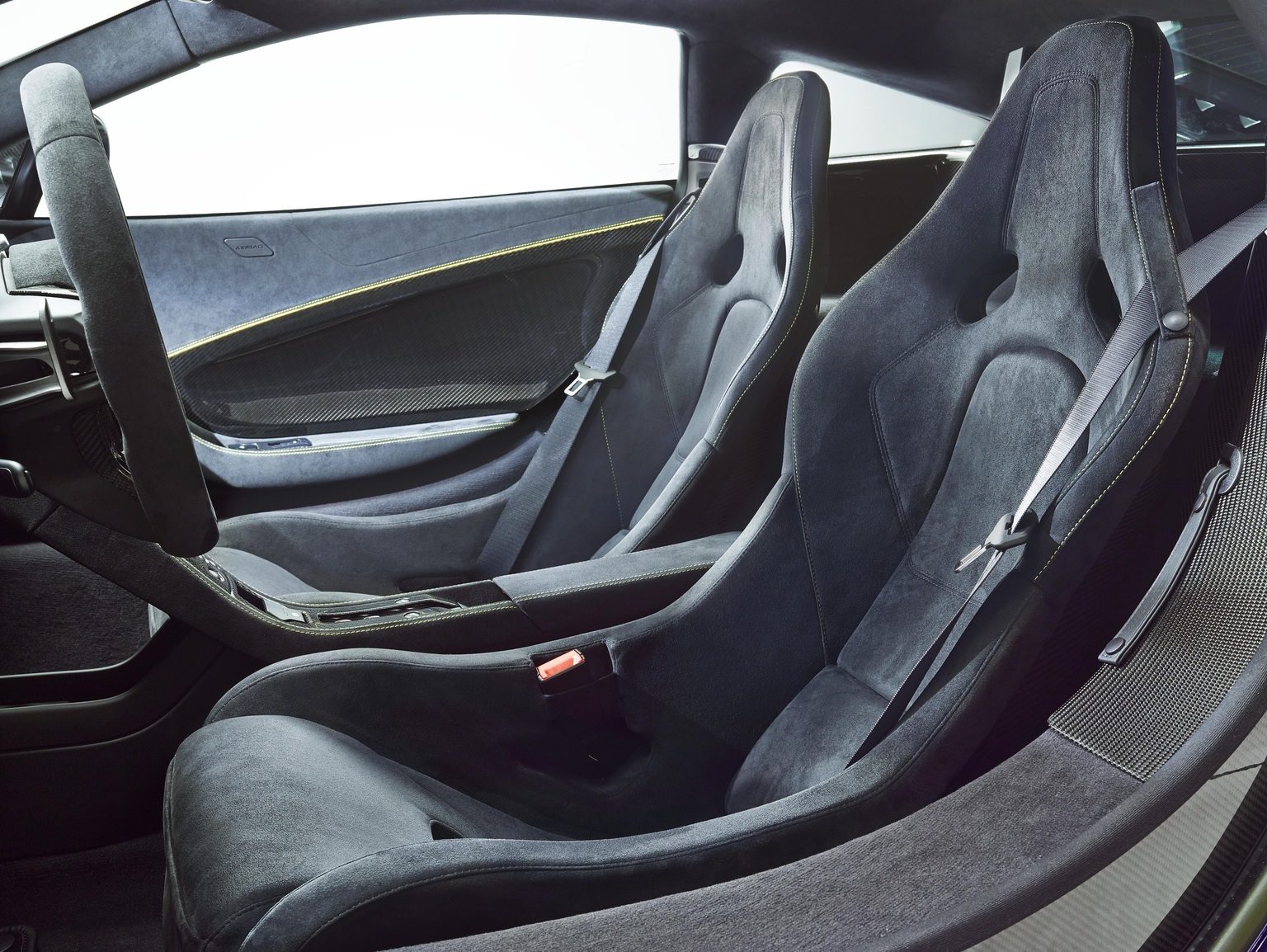
The result was that when the 650S went on sale in 2014, the complaints about jolting and jarring ceased. The car was unbelievably refined in city driving, where it encountered uneven roads, manhole covers, weather heave cracks and bumps, and when it left the city, it was still ready to tear up the back roads and country lanes that were its natural hunting grounds. In fact, the suspension rework was so superbly done that the 650S GT3 race car, for its first year of competition, used the same shock absorbers as the road car, but much stiffer racing springs.
That refinement has passed down to the 650S’s successor, the McLaren 720S, which is considered by many to be one of the most comfortable, refined rides they’ve ever had in a car capable of surpassing 210 MPH.
The Rise of Performance Hybrids: The Holy Trinity of Hypercars

The world saw something between 2013 and 2015 that is very unlikely to ever be repeated. Three different companies, Porsche, McLaren, and Ferrari, developed three separate hypercars: the 918 Spyder, the P1, and the LaFerrari, all on their own merits and designs. All three cars used a new variation of the hybrid power system that many cars had used to increase fuel efficiency, but which had also been used in Formula One since 2009 to give the engine a power boost. All three were the halo cars for the dawn of the performance hybrid era.
Often known as the Holy Trinity of Hypercars, each car deployed the performance hybrid power differently. Both the LaFerrari and P1 used one hybrid motor, although Ferrari placed theirs in the transaxle, while McLaren had theirs mounted to the axle itself. Both of these cars also deployed power only to the rear wheels, with the key difference being that the P1 could be run on the electric motor alone or in tandem with the petrol engine, whereas the performance hybrid in the LaFerrari was integrated and always on.
The Porsche 918 Spyder was the odd one out of the bunch, as it sported two electric motors, one for each axle. The rear motor was mounted as a transaxle and provided 154 HP, serving as the primary generator as well for energy recovery. The front motor, providing 127 HP, powered just the front axle, and during cruising or deceleration, an electronically controlled clutch would disconnect it, making the car RWD. On hard acceleration or with the car’s driving mode set to “Race,” however, it was always connected, making the car AWD during spirited driving.
While none of the Holy Trinity actually broke through 1,000 HP (although the LaFerrari came the closest at 950 HP), they are celebrated as hypercars because of the impact each had on the market. Before them, hybrid systems had been thought of as fuel efficiency boosters. After them, hybrids started to appear in supercars more and more frequently, either as torque fill boosters, like in the P1, or permanently integrated, as the final car in our evolution list uses it.
Motorsports to Mainstream: The 2021 Ferrari SF90 Stradale

Advanced automotive technology often makes its way from motorsports to the mainstream, trickling down first to high-performance cars and eventually to “normal” models. This process often takes a decade or so, yet Ferrari decided to throw that timeline out the window when they started to develop the SF90 Stradale. Using lessons learned while producing the LaFerrari, as well as utilizing much of the technology developed for the V6 turbo hybrid era of Formula One that began in 2014, this latest and greatest supercar from the prancing horse is a supercar that has been distilled from the essence of a race car.
The composites used to build the body of the car are of the same type that Ferrari F1 cars are made of—extremely resilient while also being incredibly lightweight. The primary engine, a 4.0L F154 FA twin-turbocharged V8, connects to the 8-speed dual-clutch transmission via a direct connection system used in the Ferrari 488 GT3 car.
The SF90 deploys three electric motors (one in the transaxle and one for each front wheel) and uses an ERS (Energy Recovery System) style charge and deploy control that is lifted almost unchanged from the original SF14H F1 car.

The SF90 also uses a DRS (Drag Reduction System), where it will open its rear wing during hard acceleration, snapping it closed when braking or cornering at speed. The body uses aerodynamics developed for both GT and F1 racing to suck the car down to the road, where the air passing over it also pushes it down, combining to generate 390 kg (860 lbs, or roughly ¼ the weight of the entire car) of downforce at 155 MPH.
The car was also “tested” before the first prototype had been built by using the Computer Fluid Dynamics (CFD) simulations that the Ferrari F1 team uses for their cars, which aided in finalizing the shape of the body and reducing prototyping and development costs significantly.
The Ferrari SF90 Stradale represents a motorsports development mindset applied to a road car. It took only 5 years to develop thanks to the simulations, and because of the performance hybrid research and development from both the LaFerrari and Scuderia Ferrari for the V6 turbo-hybrid F1 cars, the SF90 produces a combined total of 986 HP, or 1,000 PS. It is officially the fastest Ferrari road car ever made, beating the LaFerrari around the Fiorano Test Track by just under three quarters of a second.


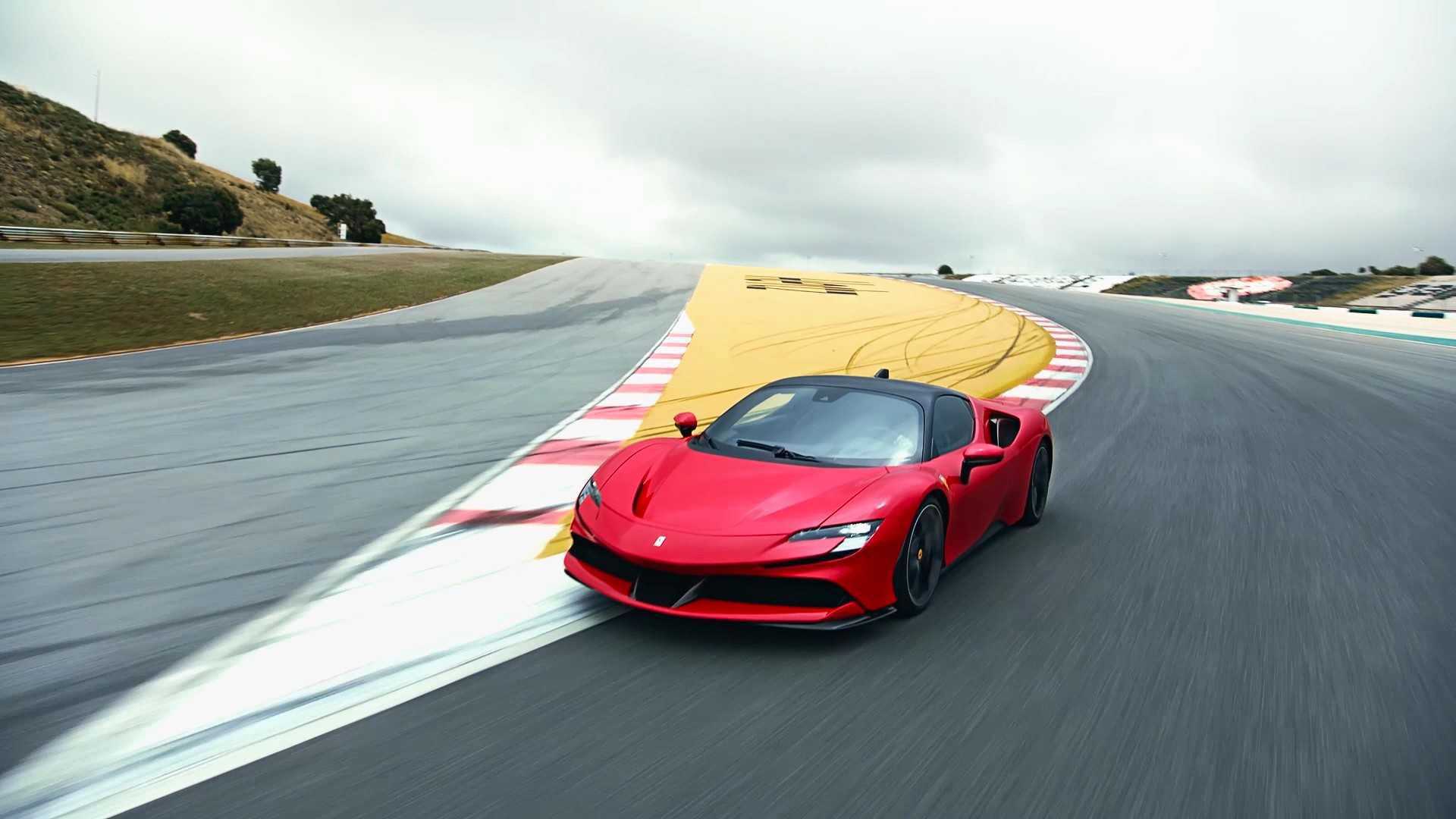

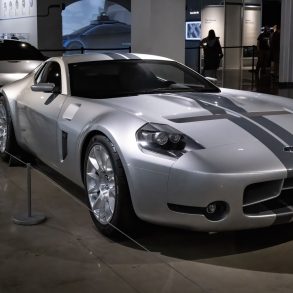
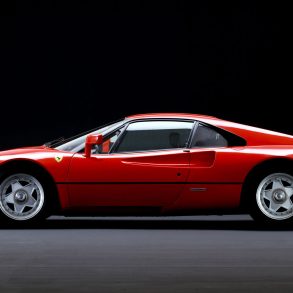
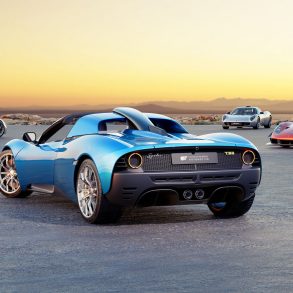
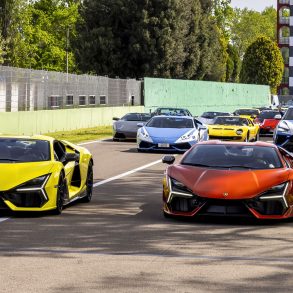
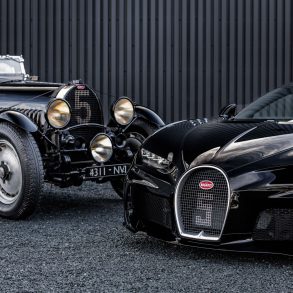
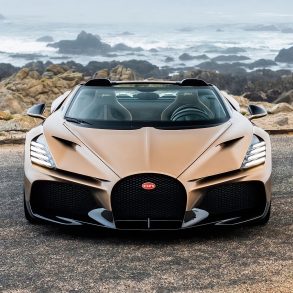

How quickly we forget! The Porsche 930 Turbo changed the landscape in the mid 70s. Not door stop wedge styling, but it raised the performance bar.
Well it looks that this article is written by a 16 year old kid that has read some useless car magazines, what a nonsense.
On another note all the advertisements in between the lines in the articles are a pain in the a.., therefore a cancel my subscription to your news letter
And what would be on your list?